Sugarloaf Campsite, St. Lucia
25th to 28th March 2023

On impulse, Sally and I decided to go to Cape Vidal to see the visiting Lesser Noddy. It had been present there for quite some time so we thought that we would take a chance. The speculation was that the Lesser Noddy – presumably from around The Seychelles – had been blown off course by Freddie – our unfriendly cyclone.
We headed to Sugarloaf campsite in St. Lucia for 3 nights – our Afrispoor Cheetah in tow.
We arrived late-afternoon and set up camp. Considering we had only made the decision to go at 09h00 that morning, this was not bad going as we had not even collected our Cheetah nor considered packing.
The next morning, we were up and on our way to Cape Vidal as soon as the Isimangaliso gate (Eastern Shores) opened. We arrived there at Cape Vidal about 06h20. We purposefully planned to get there early to coincide with all the reported sightings of the Lesser Noddy being reported around 06h00.
It was odd driving through the Park pre-dawn. And there was water everywhere. At one point there was water across the road with two Red-billed Teals enjoying an early morning dip.
Typical watery landscapes:




On arrival at Cape Vidal, there was only one other person present looking for the Lesser Noddy – Anton Kruger of “Firefinch” App fame. The tide was in, so no part of the reef was above water. After patiently waiting and scanning the beach, we believed that we should return later when the tide was out and the reef exposed. Anton told us that he had arrived the afternoon before and seen the Noddy but that it had flown off south soon after he had seen it. Our hopes subsided.
So off we went for a drive round the rest of the Park. We headed for the Grassland Loop to the south of Lake Bhangazi. And Lake Bhangazi was so full that it came right up to the causeway – something we had never seen before. Usually it was 50 to 100 metres distant.



And looking to the south (the other side of the causeway) – more water right up to your feet too.

The wind had a negative effect on bird and animal sightings. However, we did see several buffalo in the distance as we travelled the Grassland Loop. Here are some of the photos taken:

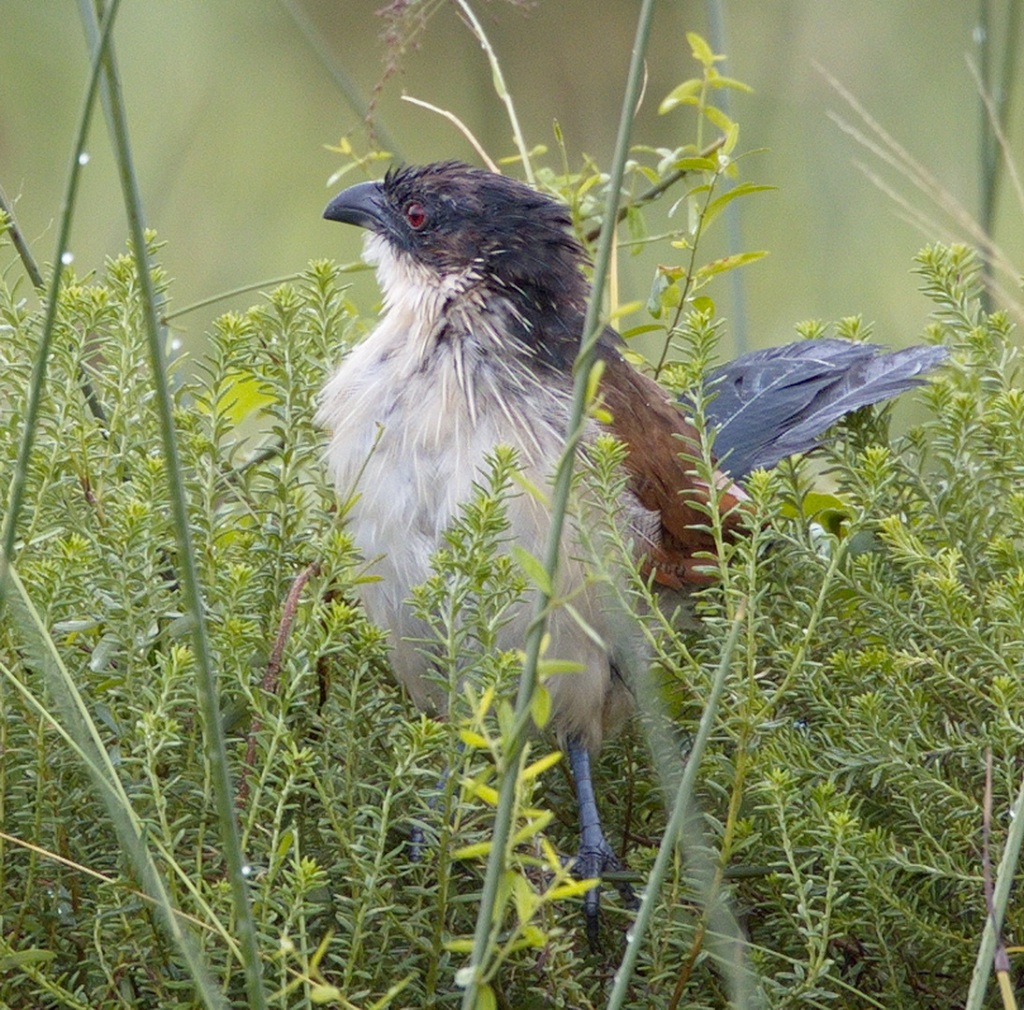


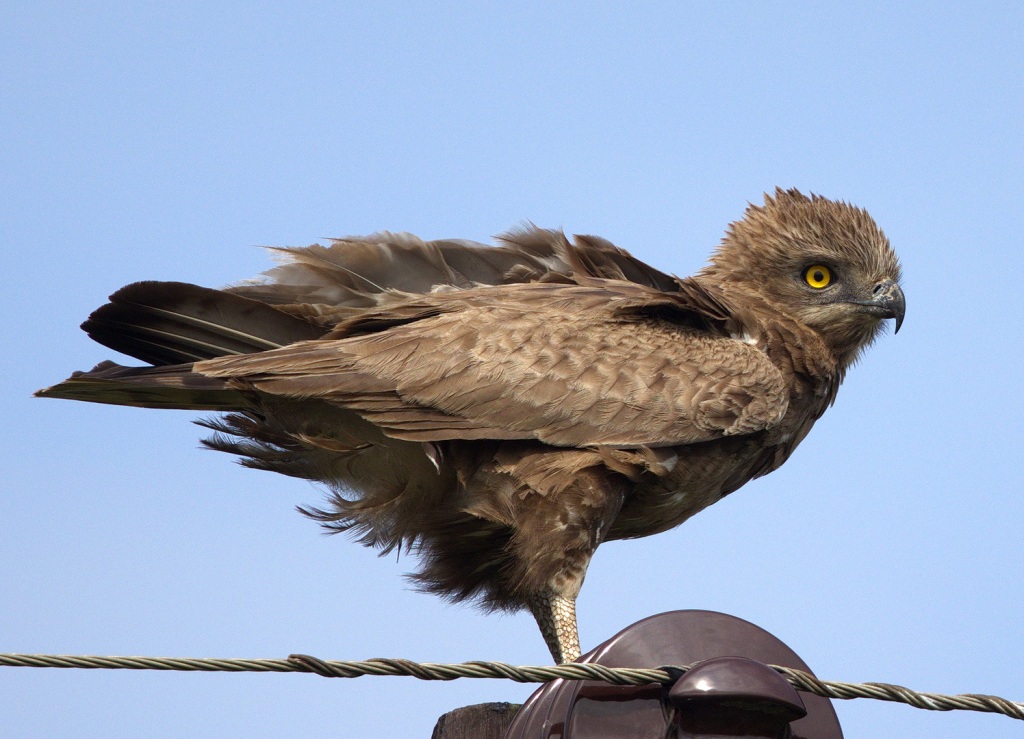
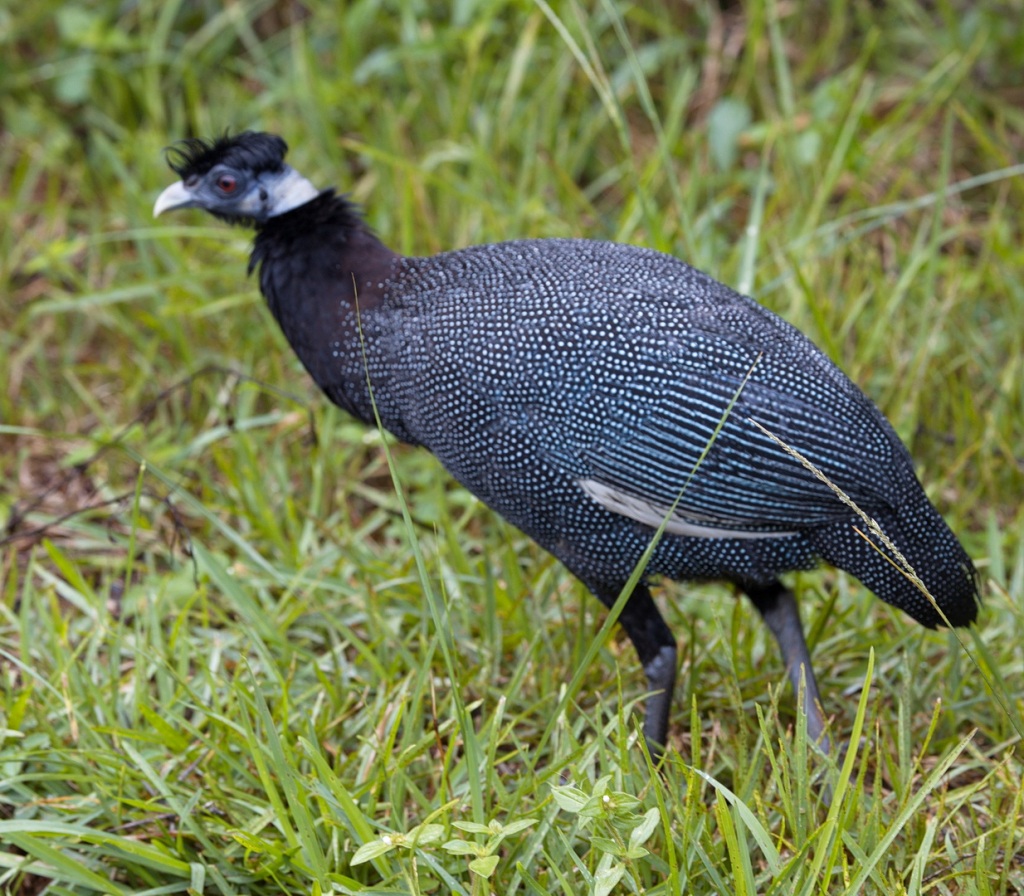
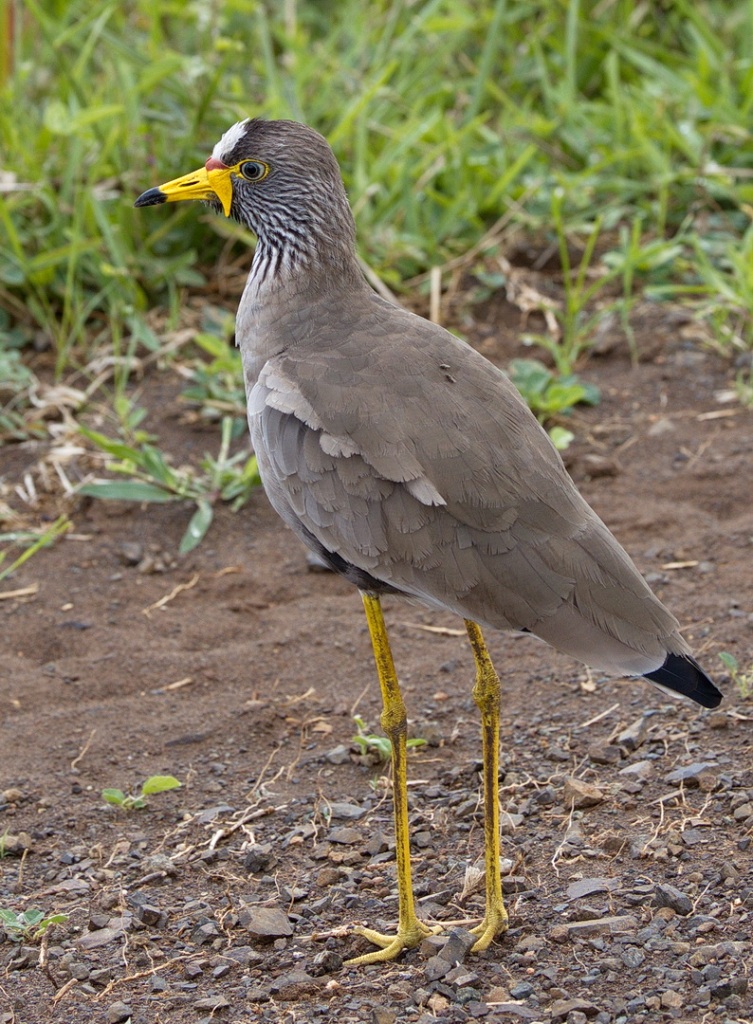
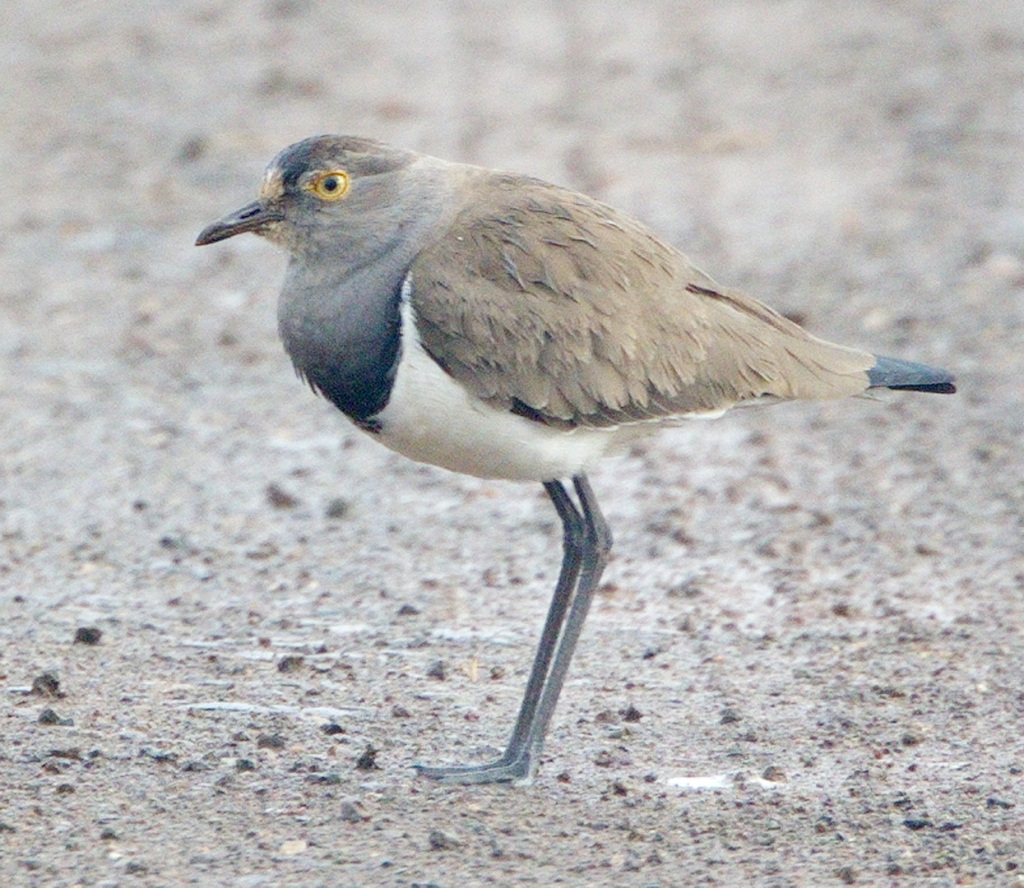
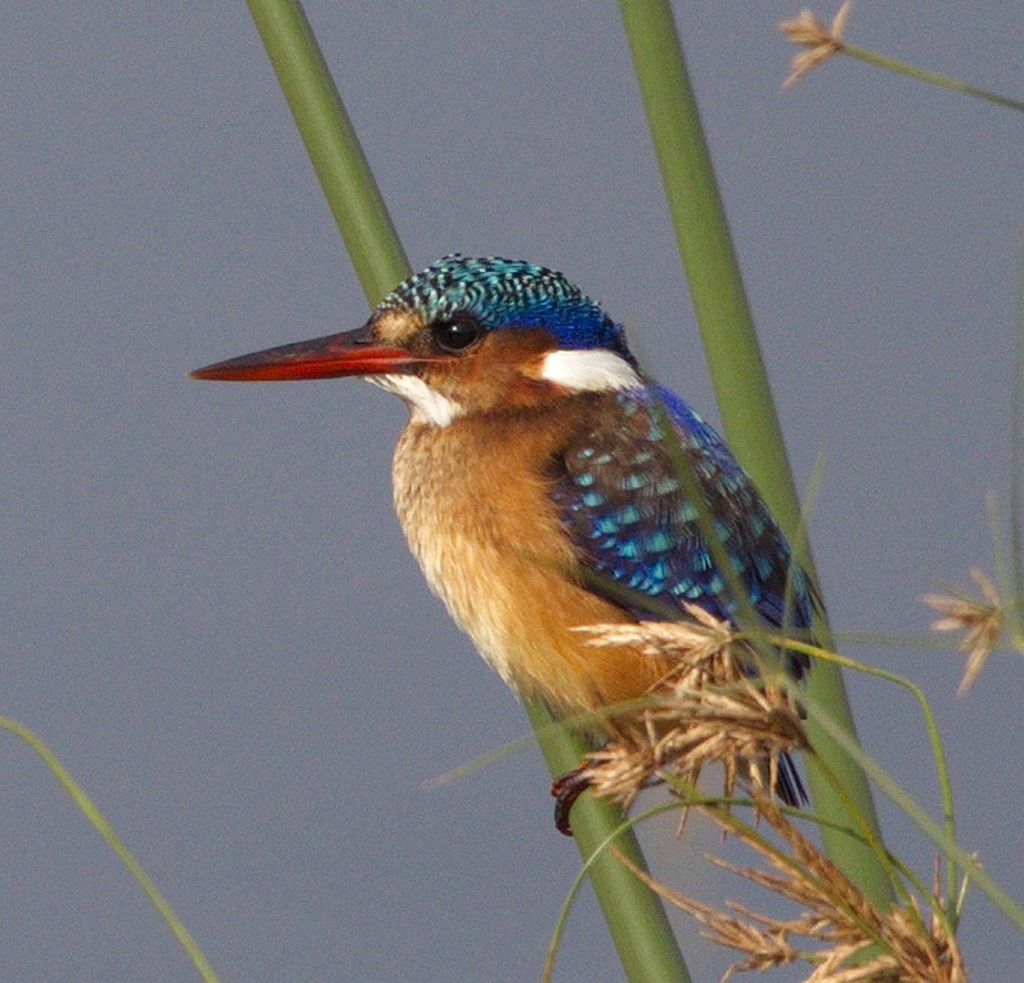
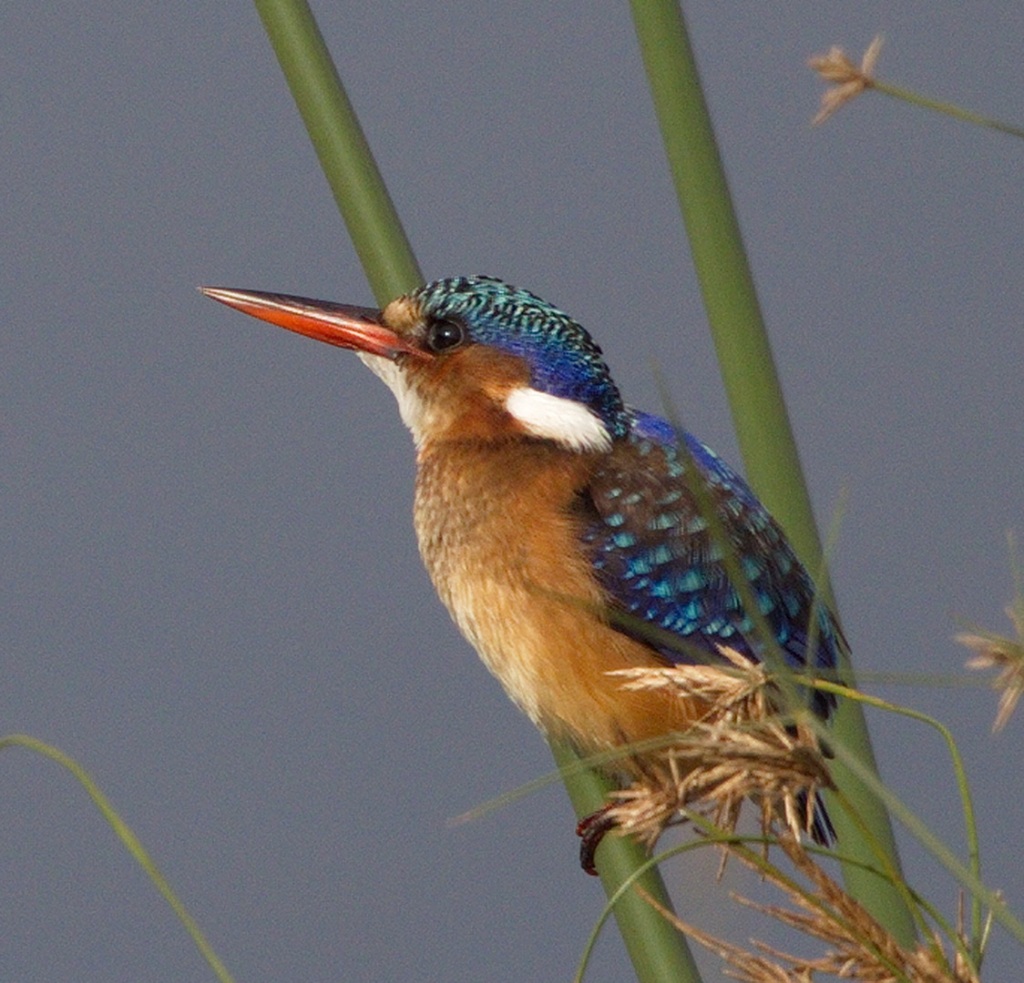



It turned out that we were following Anton around the Grassland Loop. At one point near the end of the Loop he pointed out a Lesser Moorhen swimming about in one of the many ponds.


We did find another later in the day on our way back to camp. It was on the Pan Loop road. We had checked the pond from the Amazibou hide and seen nothing. So we thought we would go to the hippo pond at the end of the Pan Loop. As we descended, we noticed that the water on our right was right up to the road and the road ahead was flooded. We were not going any further. As we were turning around we noticed a waterbird swimming through the reeds – another Lesser Moorhen.

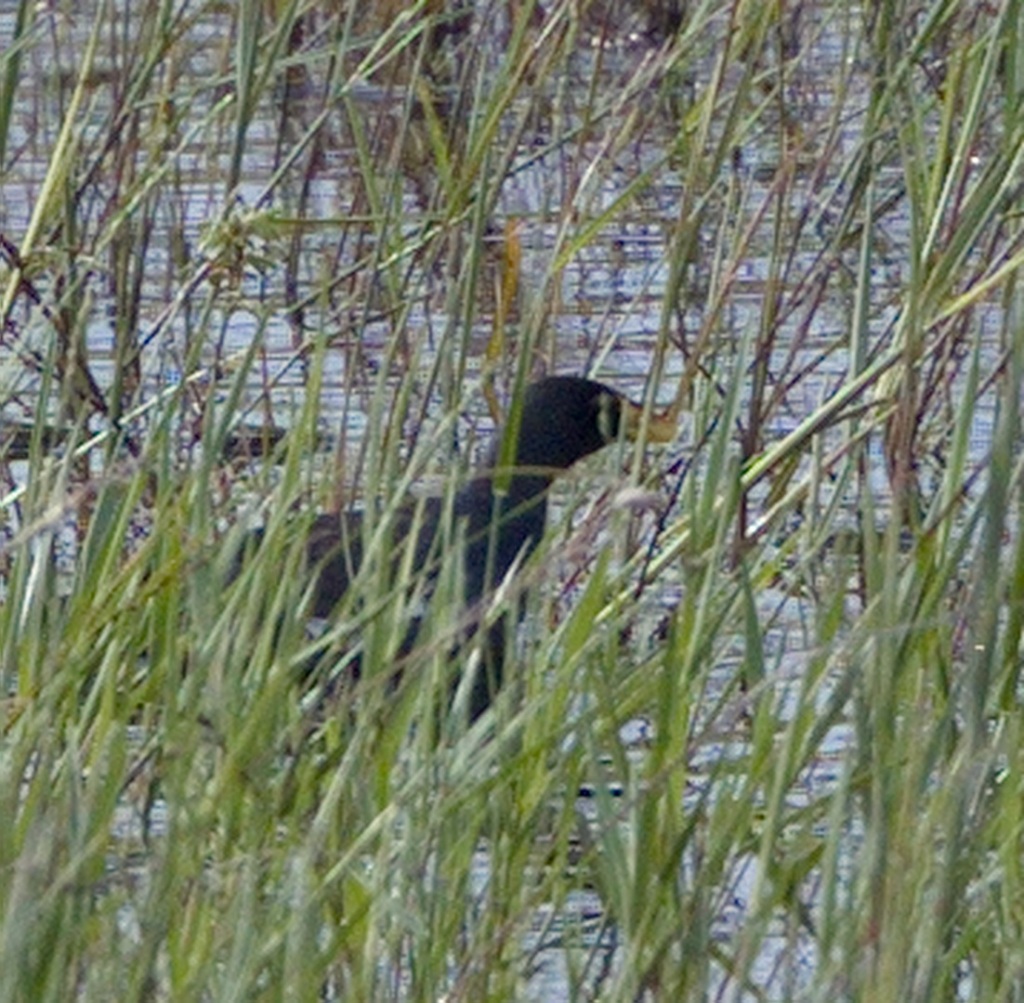
Once back on the tar, we had not gone far when we came across the Martial Eagle – pictured below.

It was at the end of the Grassland Loop on our way back to Cape Vidal that we saw the imperious Martial Eagle shown above. And as we were watching, a carload of friends from Durban drew up alongside us. They told us they had seen the Lesser Noddy.
That was it. We decided it was time to get back to Cape Vidal as quick as we were allowed. As we passed Anton’s car we called out to him that the bird was there. And we set out together at pace. After a while I noticed that Anton was no longer behind us and assumed that he had slowed down for some reason. We continued.
Once at Cape Vidal, Sally and I headed for the now protruding reef.
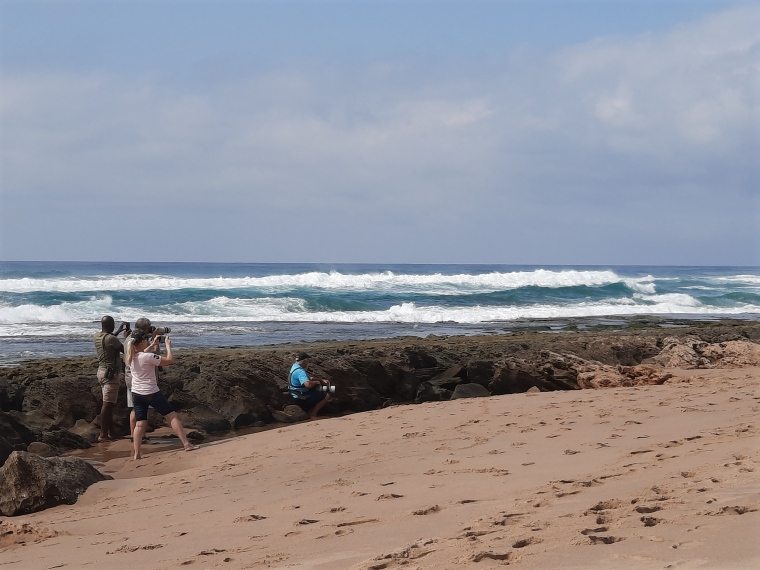
As we approached the reef, we saw the Noddy flying over the rocks. Well at least we had seen it even if we don’t get close. But close we did get. The Lesser Noddy kept its vigil over the rocks and flew around in circles over them, sometimes landing but at times flying over us really close. Eventually it decided to pose for us and landed on the rocks less than 10 metres from us. What a lovely sighting – probably to easiest lifer sighting in our experience.
The reef over which the Lesser Noddy patrolled:
Setting the scene:


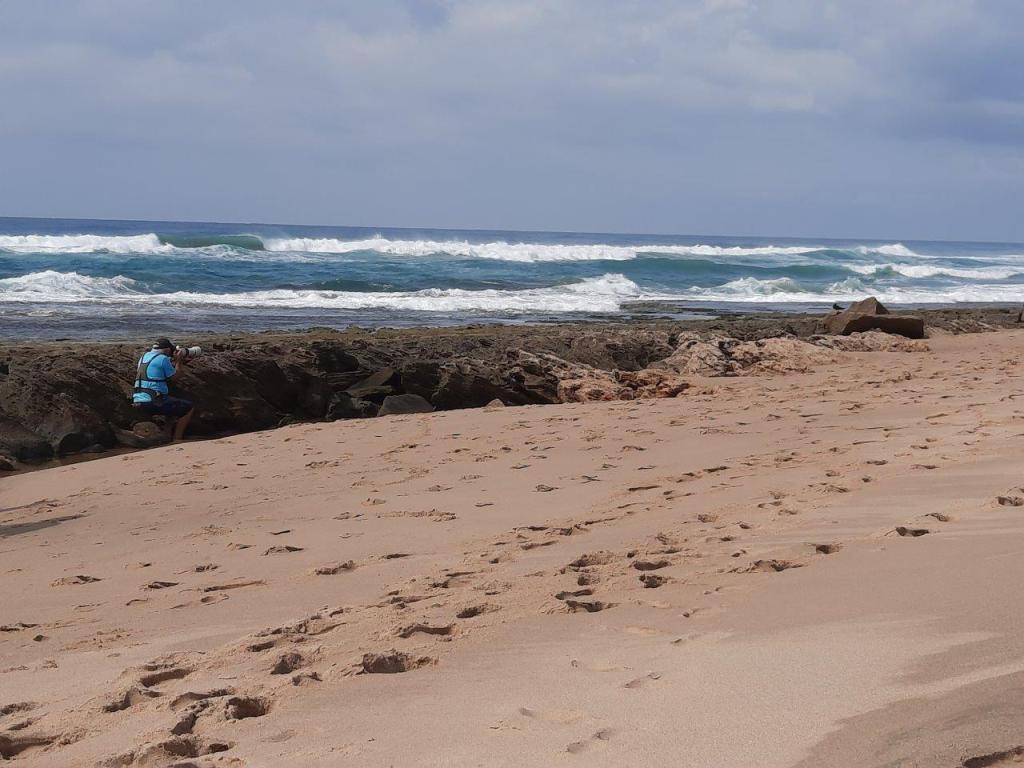
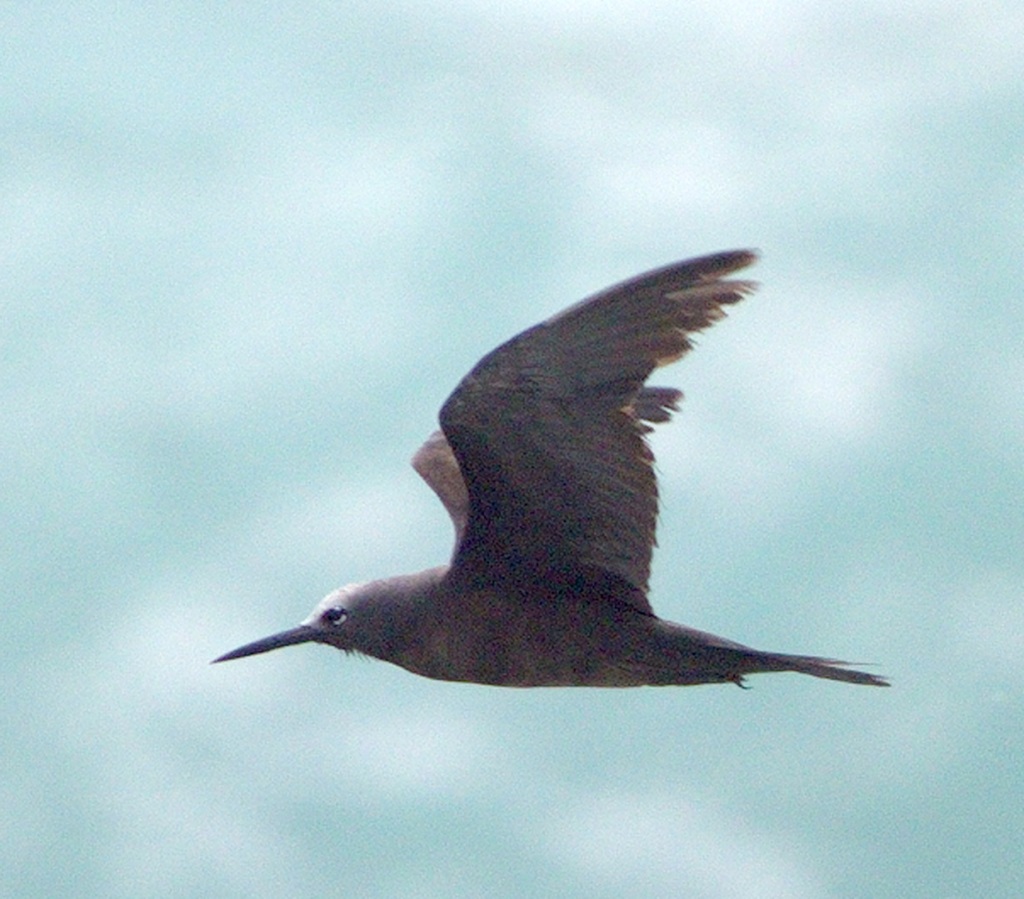

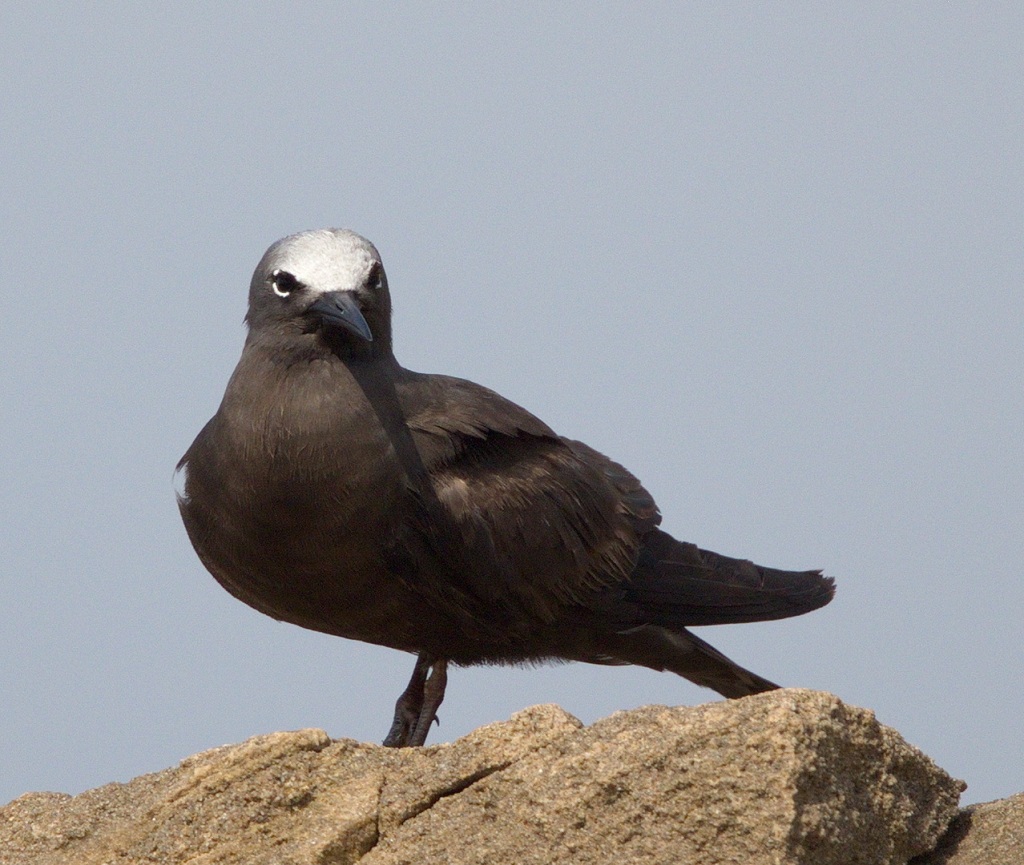
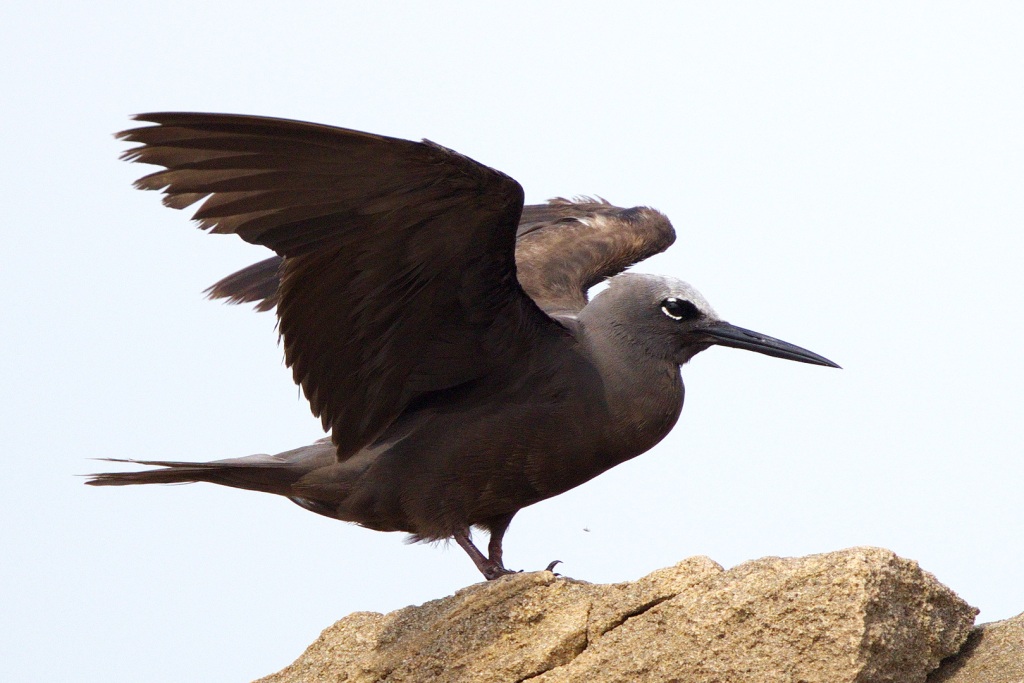

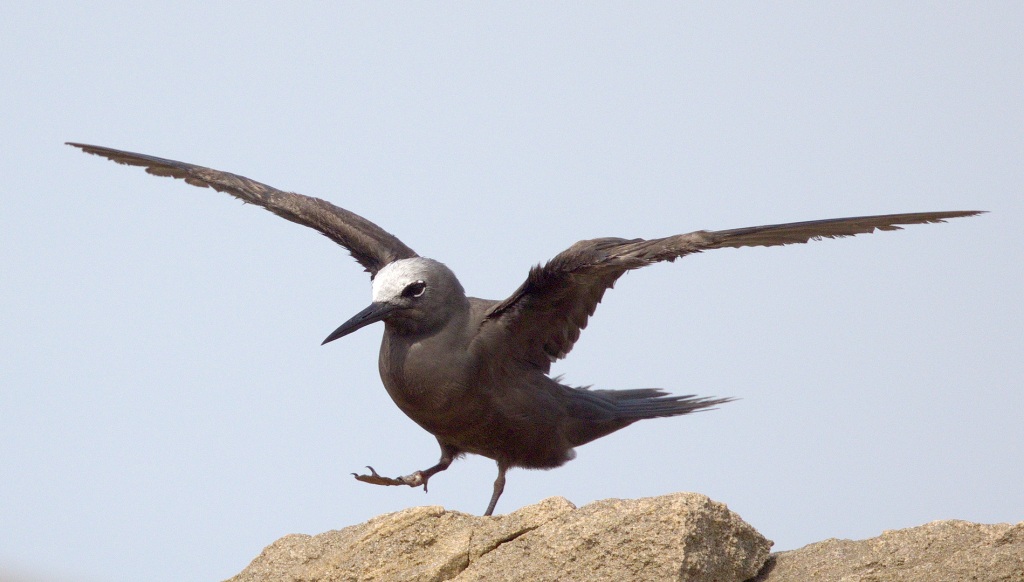
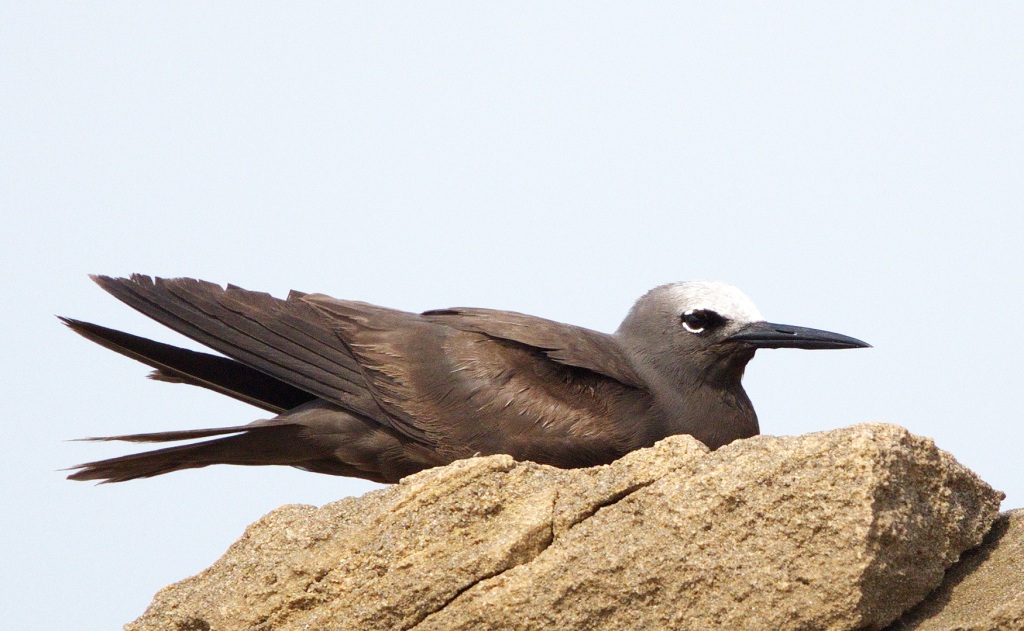
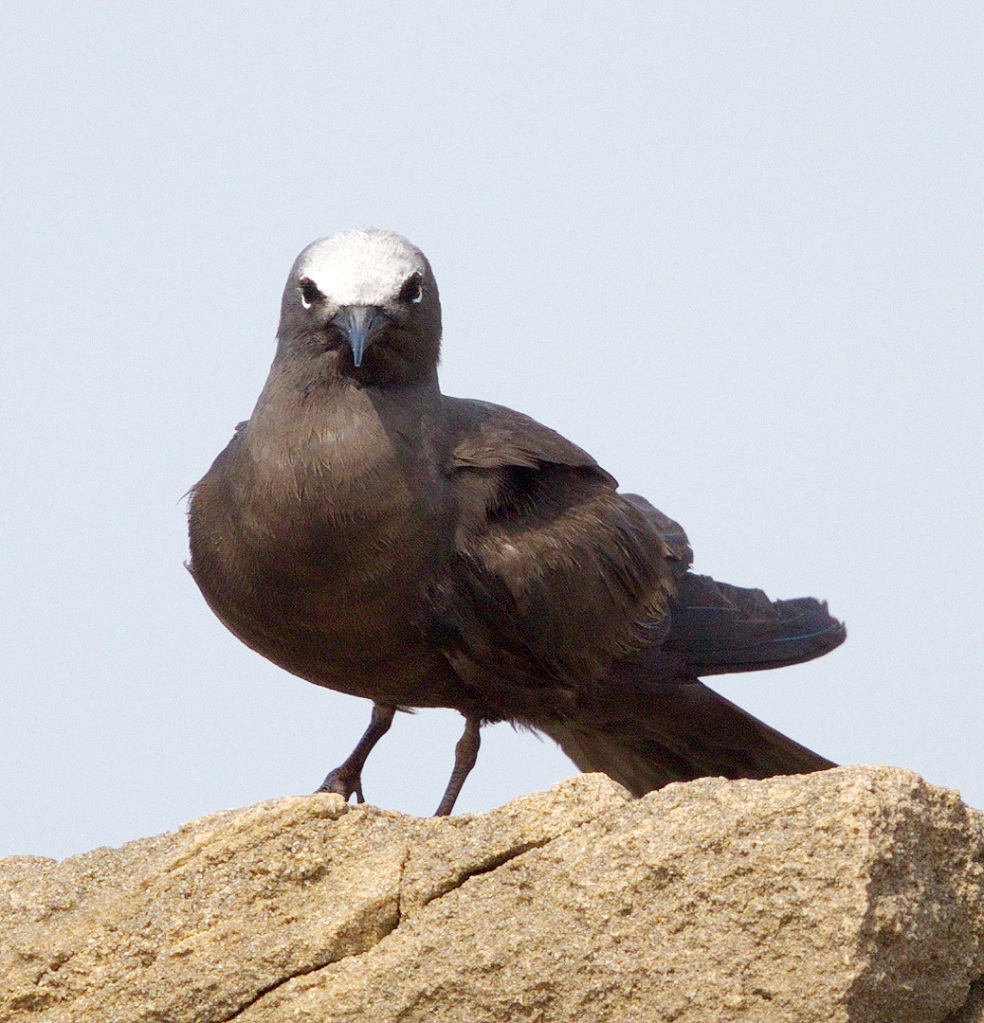


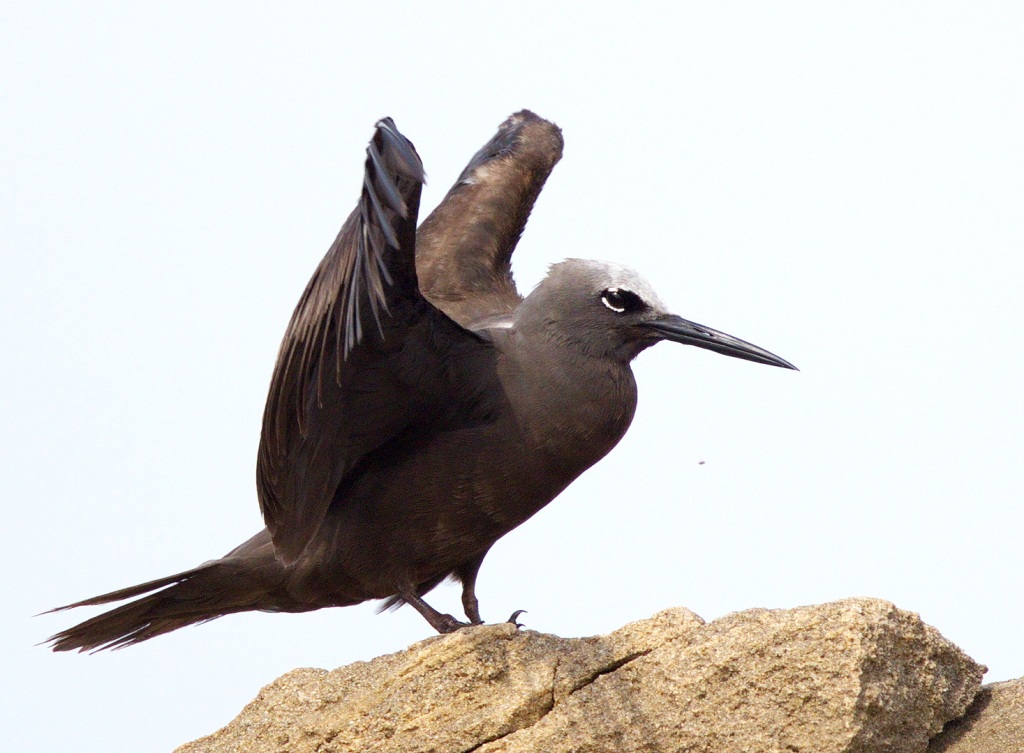

Anton appeared and we asked what had kept him. He told us that as we drove ahead of him, we disturbed a large male leopard which walked out in front of him. Stop they did for his wife and children to enjoy. If that had been us, I am sure we would have been in a serious quandary as to whether or not to stop!!
A number of Sanderlings and a White-fronted Plover were also feasting among the rocks.


That afternoon, back at St. Lucia, we took a walk along the beach to the estuary’s mouth to the sea. We went to see the Terns and the African Skimmers which had been hanging around amongst the Terns for some time. And they were there – unfortunately on the other side of the estuary.
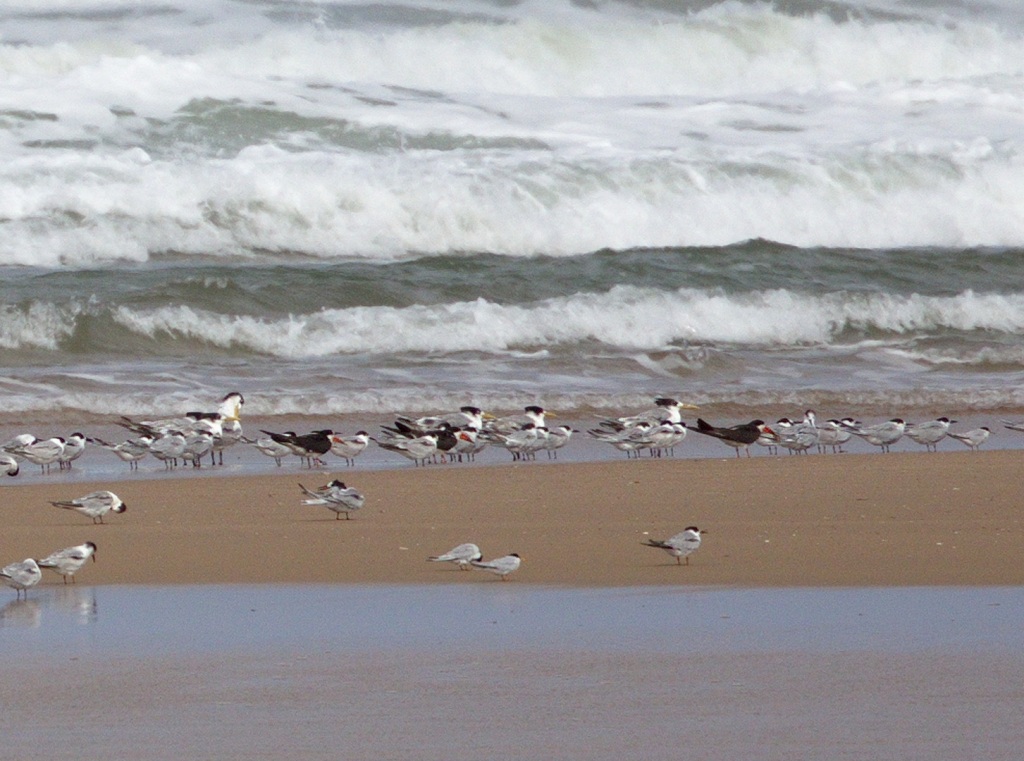




The next day we went to the Western Shores side of the Isimangaliso Wetland Park. A very cloudy, drizzly and windy day. Again, we saw little until much later in the morning on our way back to Sugarloaf campsite.


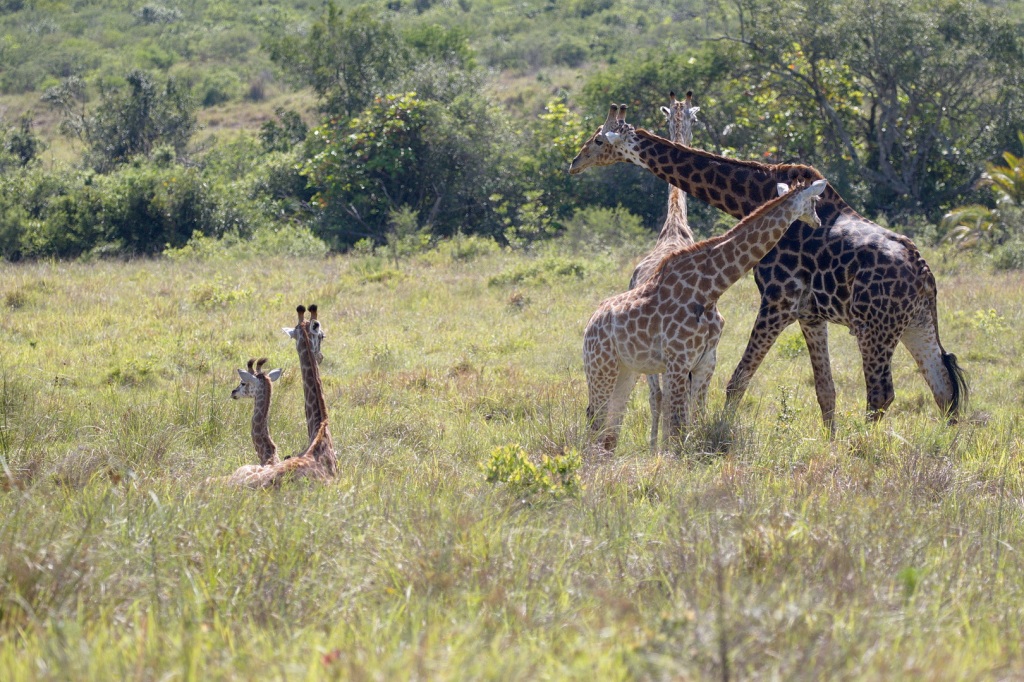
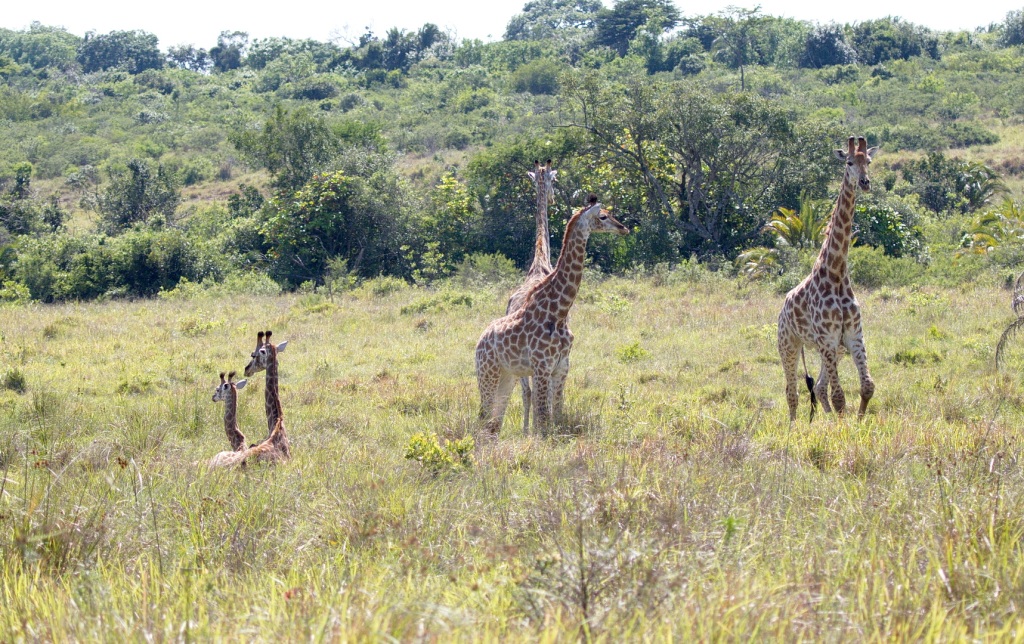
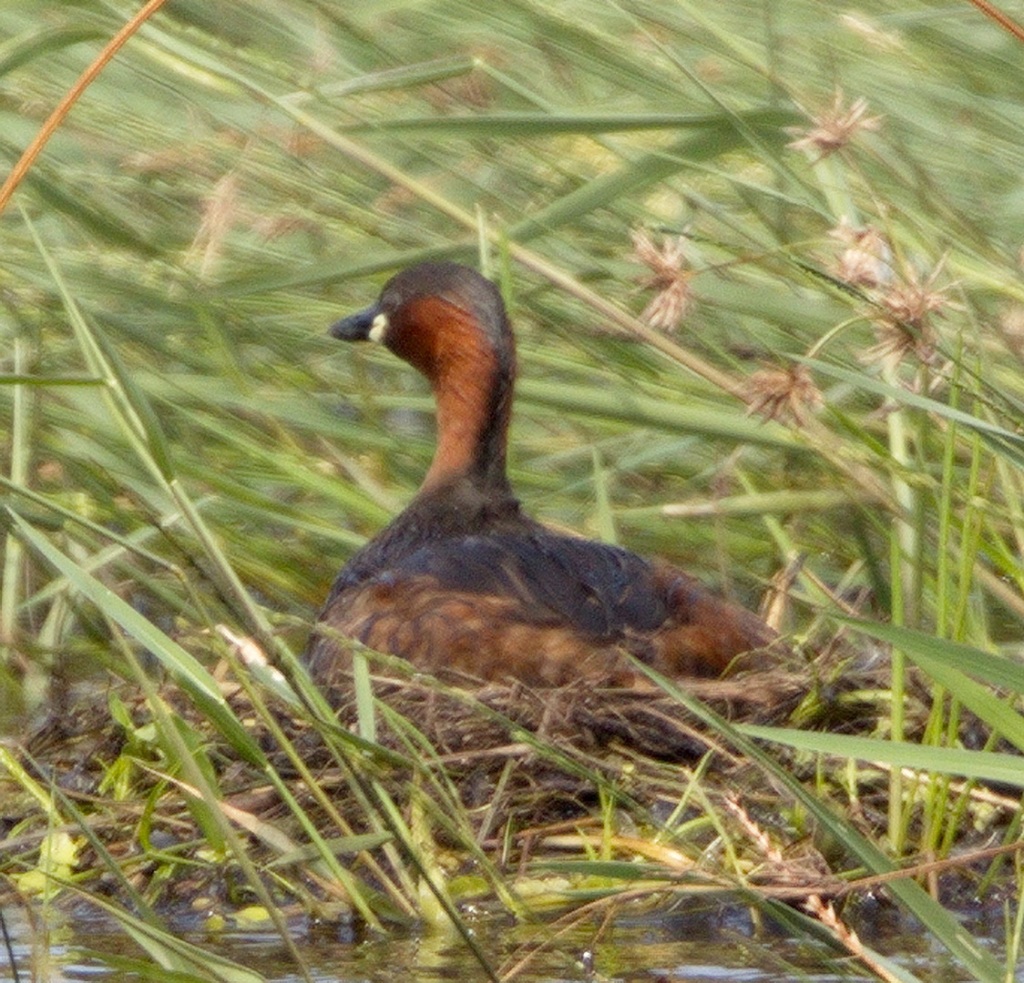
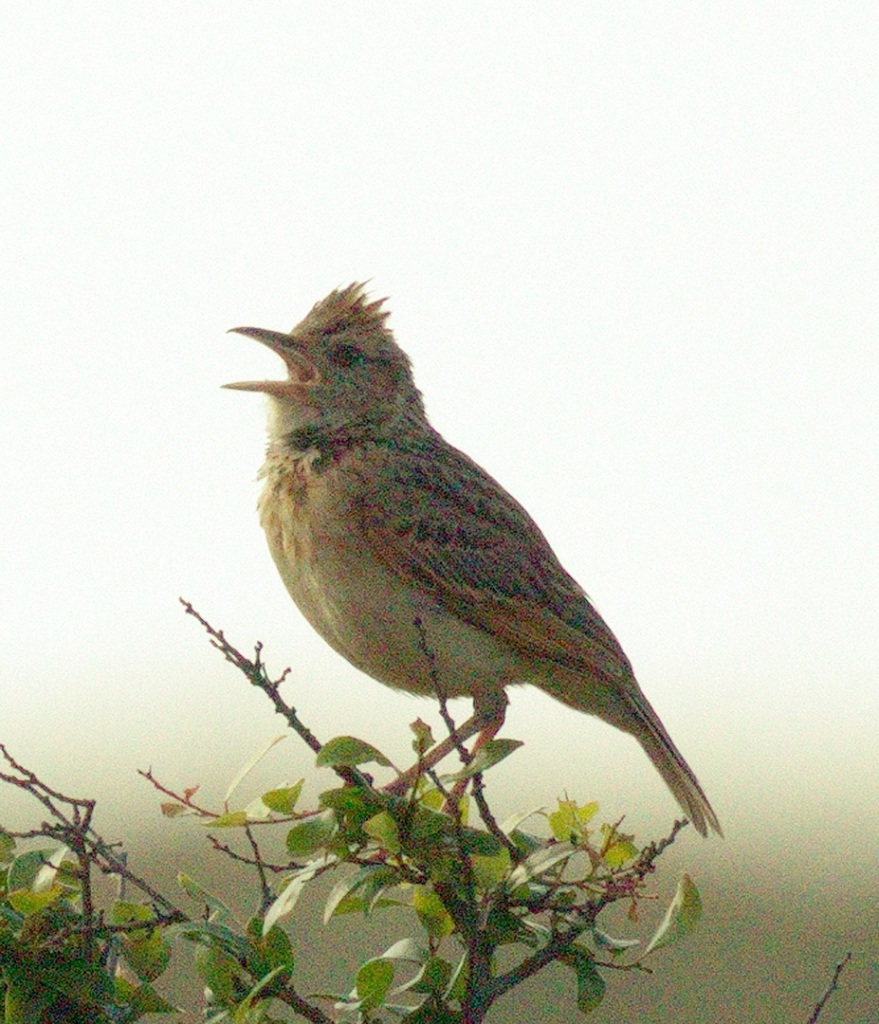


Despite the short visit and the adverse conditions, we managed to identify 92 different bird species – the list of which you can see by clicking on the download below.
As a matter of interest, the Lesser Noddy did a disappearing trick the day after we saw it. We were so fortunate.
Sally King and Paul Bartho

